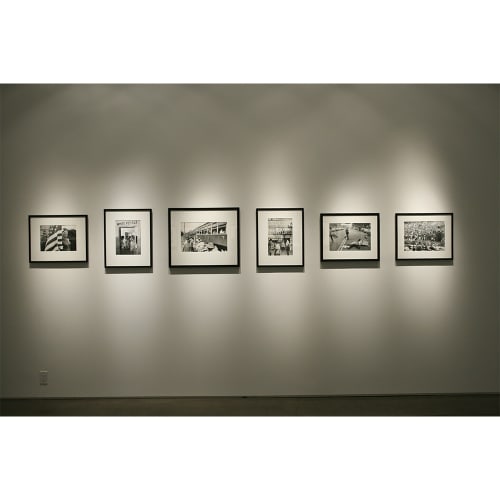Bruce Silverstein Gallery is pleased to announce Black in White America, an exhibition of works by Leonard Freed taken during the 1960s.
In 1962 Leonard Freed went to Berlin to photograph the wall being erected between East and West Berlin. While there he saw an African American soldier standing in front of the wall and it struck him that at home in the United States, African Americans were struggling for civil rights and in Germany an African American soldier was proudly defending the USA—the same country denying him his rights. When Freed returned, he traveled to New York, Washington, D.C., and all throughout the South, capturing images of a segregated and racially entrenched society.
This important body of work is representative of the political, racial, and ideological unrest of the 1960s. Black in White America highlights the tradition and ideals of the Magnum Photo Agency as well as Leonard Freed's personal and most admirable attempt to bring awareness to atrocities occurring at home in the United States. While there were many photographers both black and white documenting the Civil Rights Movement for the daily press, Freed approached the project with the intention of having his photographs sequenced in a cohesive book. The photos were ultimately published in 1968 in "Black in White America".
The body of work is documentary in nature and reveals the photographer’s view of the racially segregated Southern United States. It is significant as a record of the inequalities suffered by African Americans through the 1960s as well as a revelatory document of the language, imagery and emotions experienced by a white man who sought to document this racial disparity.
Freed, born in Brooklyn, joined Magnum in 1972. He worked on assignment for the major international press, including "Life", "Look", "Paris Match", "Die Zeit", "Der Spiegel", "Stern", "Sunday Times Magazine", "New York Times Magazine." His coverage of the Civil Rights movement first made him famous, but he also produced major essays on Poland, Asian immigration in England, North Sea oil development, Spain since Franco and other subjects. Photography became Freed’s means to explore societal violence and racial discrimination.
The vintage prints on view in Black in White America come directly from the Freed Estate. Many are the original prints that Leonard and his wife and partner Brigitte made over the years for book projects such as “Black in White America.”
Leonard Freed’s retrospective entitled Worldview, curated by William Ewing, Director of the Musée de l’Elysée, has been exhibited extensively in Europe.
